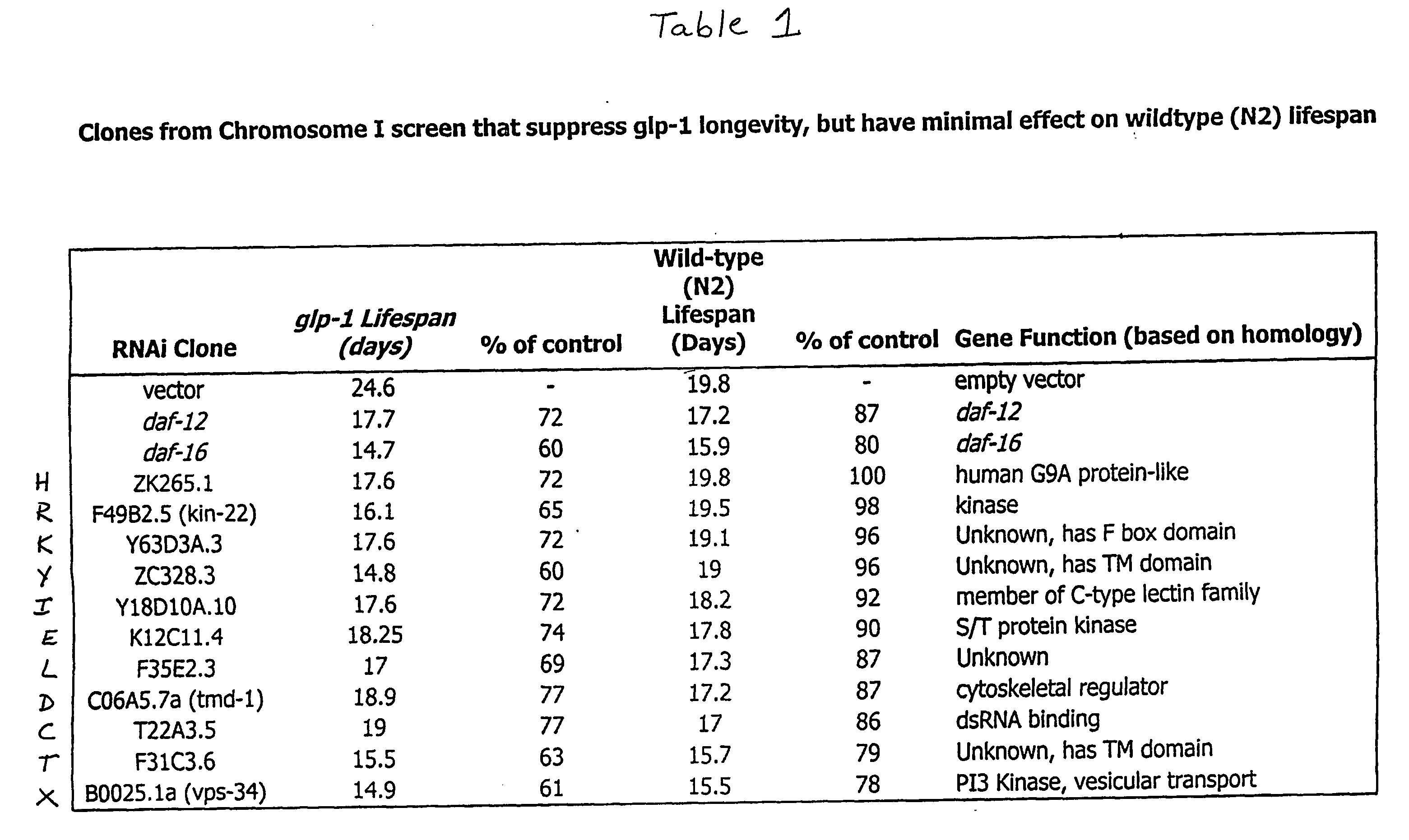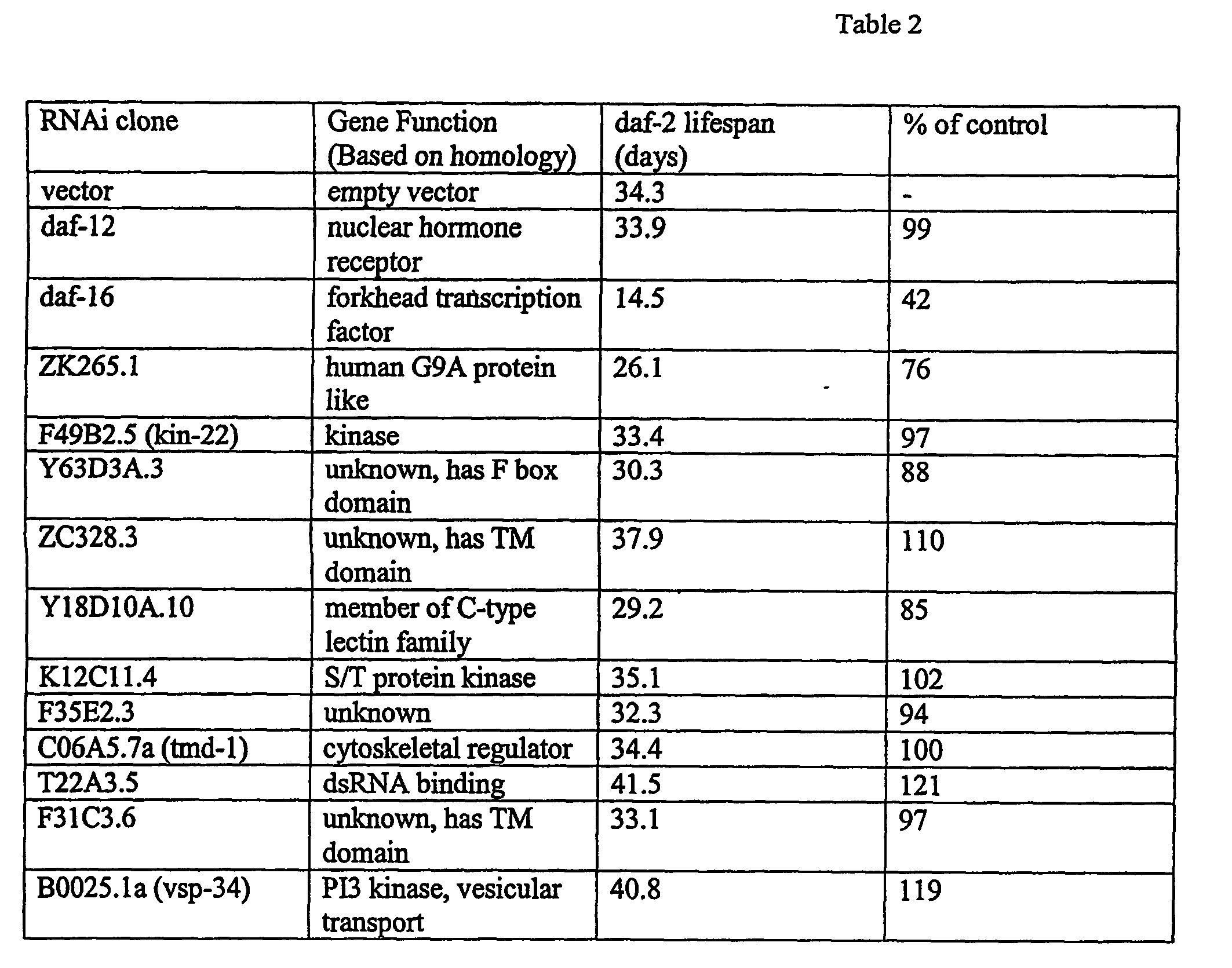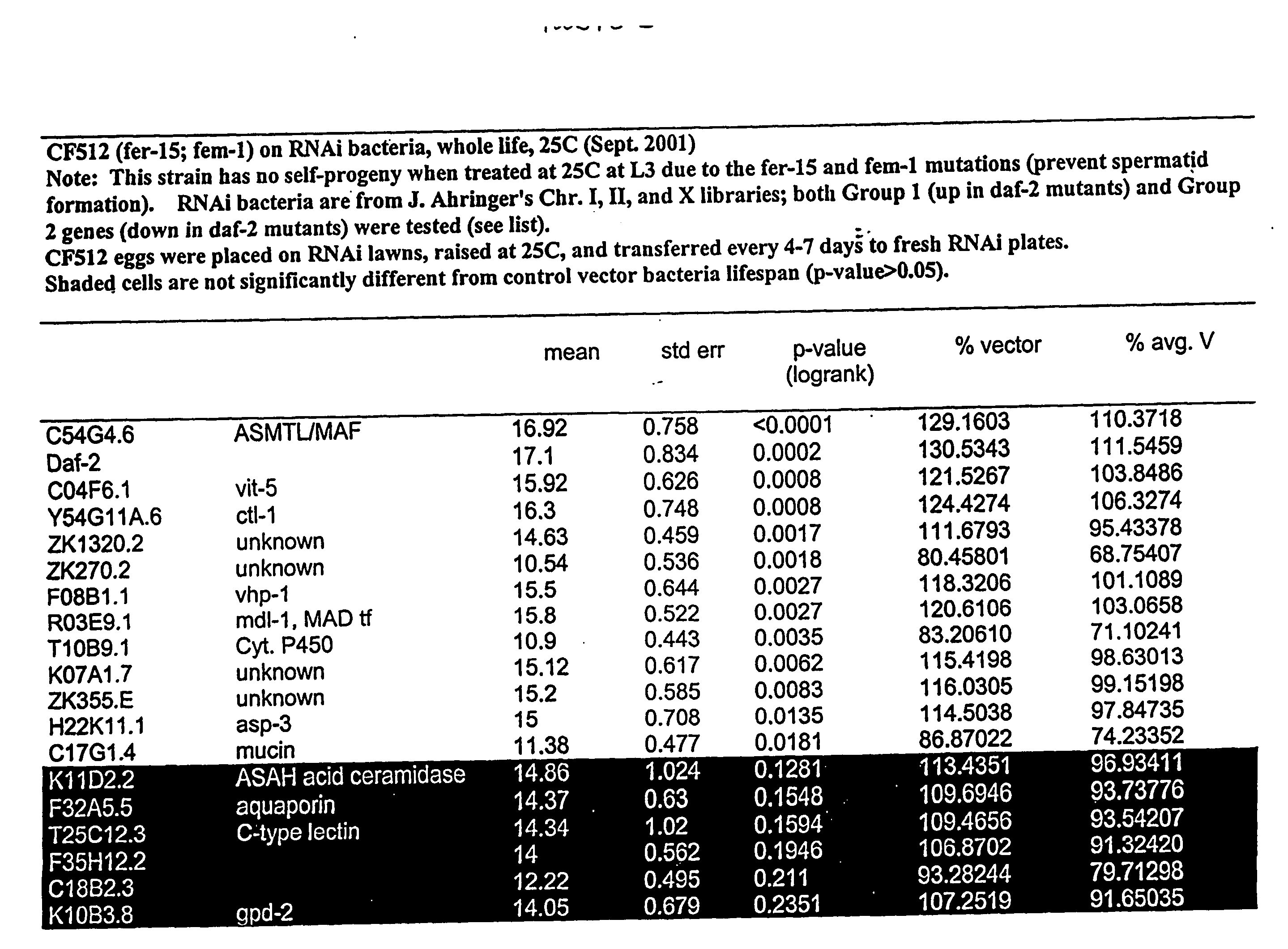Eukaryotic genes involved in adult lifespan regulation
a technology of eukaryotic genes and lifespan regulation, applied in the field of eukaryotic lifespan regulation, can solve the problems of cumbersome identification and laborious and laborious traditional genetic methods
- Summary
- Abstract
- Description
- Claims
- Application Information
AI Technical Summary
Benefits of technology
Problems solved by technology
Method used
Image
Examples
example 1
Laser Ablation of Germ Cell Precursors to Identify Genes Involved in Aging
[0247] When the germ cell precursors of C. elegans are killed with a laser microbeam, lifespan is extended (see FIGS. 1-6). This extension requires the steroid hormone receptor DAF-12, the cytochrome P450 homolog DAF-9 and the forkhead-family transcription factor DAF-16. The longevity of these animals requires the presence of the somatic gonad. This method can be used as a screen for identifying genes that interact with the reproductive system to regulate the aging of C. elegans.
example 2
Temperature-sensitive Mutation Used to Identify Genes Involved in Aging
[0248] The mutant glp-1(e2141) does not produce a germline when grown at high temperature, and as a result, this mutant lives longer than normal (Arantes-Oliveira et al., Science 295:502-505 (2001)). One strategy is to look for bacterial RNAi clones that prevent the lifespan extension of these animals but have only a small effect on wild-type lifespan (see FIGS. 1-6). This strategy can identify genes like daf-16, which are needed in order for germline-ablated animals to live longer than normal. Null mutations in this gene completely suppress the lifespan extension of glp-1 mutants, but have only a small (20%) reduction of wild-type lifespan.
[0249] The strategy can also identify genes required for the somatic gonad to extend lifespan. Eleven such genes were identified in a screen of Chromosome 1. The genes are shown in Table 1. Killing the germline precursor cells of normal worms extends lifespan, and this lifes...
example 3
Genes That Act Downstream of DAF-16 to Influence the Lifespan of C. elegans
[0253] DAF-16, a FOXO-family transcription factor, influences the rate of ageing of Caenorhabditis elegans in response to insulin and insulin-like growth factor 1 (IGF-1) signaling. Using DNA microarray analysis, we have found that DAF-16 influences expression of a set of genes during early adulthood, the time at which this pathway is known to influence ageing. Here we find that many of these genes influence the ageing process. The insulin / IGF-I pathway functions cell non-autonomously to regulate lifespan, and our findings suggest that it signals other cells, at least in part, by feedback regulation of an insulin / IGF-I homologue. Furthermore, our findings suggest that the insulin / IGF-I pathway ultimately exerts its effect on lifespan by upregulating a wide variety of genes, including cellular stress-response, antimicrobial and metabolic genes, and by downregulating specific life-shortening genes.
[0254] The ...
PUM
| Property | Measurement | Unit |
|---|---|---|
| molecular weight | aaaaa | aaaaa |
| molecular weight | aaaaa | aaaaa |
| molecular weight | aaaaa | aaaaa |
Abstract
Description
Claims
Application Information
 Login to View More
Login to View More - R&D
- Intellectual Property
- Life Sciences
- Materials
- Tech Scout
- Unparalleled Data Quality
- Higher Quality Content
- 60% Fewer Hallucinations
Browse by: Latest US Patents, China's latest patents, Technical Efficacy Thesaurus, Application Domain, Technology Topic, Popular Technical Reports.
© 2025 PatSnap. All rights reserved.Legal|Privacy policy|Modern Slavery Act Transparency Statement|Sitemap|About US| Contact US: help@patsnap.com



